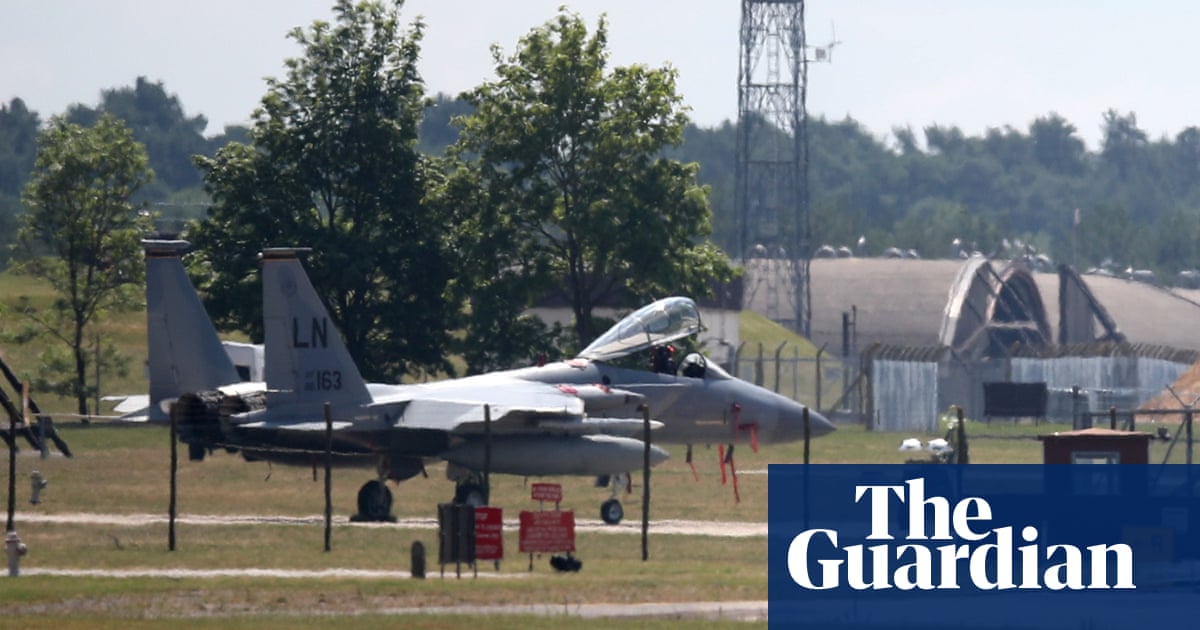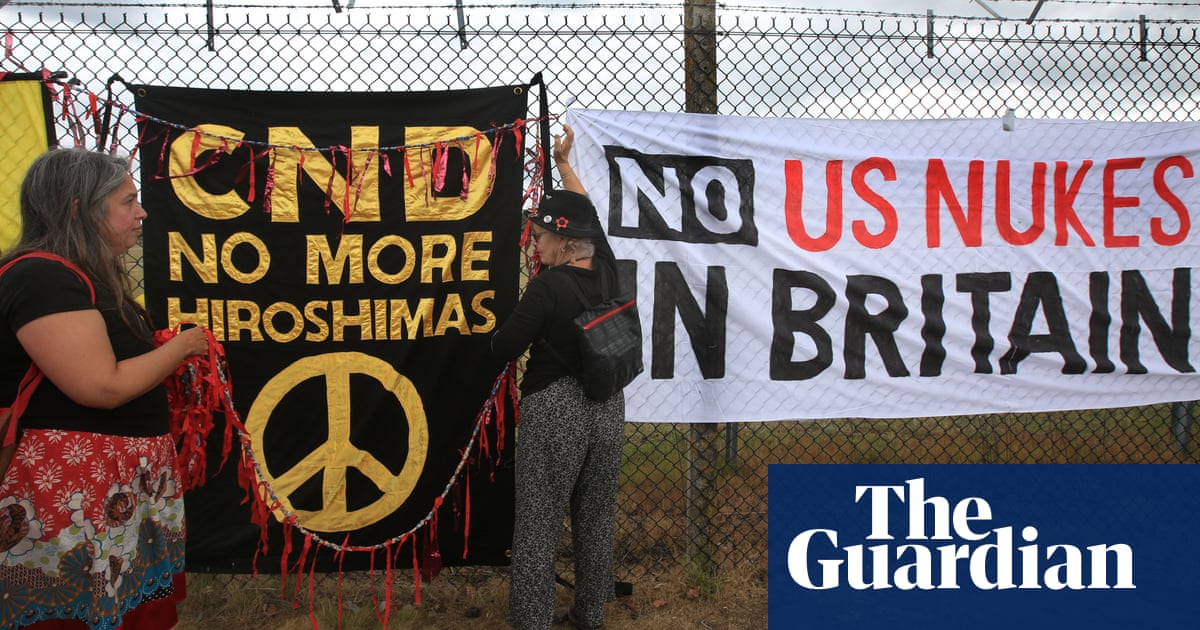
The US air force has secured $50m (£39m) funding next year for a project that could pave the way for American nuclear weapons to return to British soil for the first time in more than 15 years.
In justifying the expenditure on a 144-bed dormitory at RAF Lakenheath in Suffolk, the USAF told Congress the building was intended to “house the increase in enlisted personnel as the result of the potential surety mission”, which is jargon typically used by the Pentagon to refer to handling of nuclear weapons, according to experts.
Construction of the dormitory is due to begin in June 2024 and last until February 2026, and is the latest in a series of signs that preparations are under way for the possible return of US nuclear weapons to UK territory.
Matt Korda, of the Federation of American Scientists (FAS), who first reported on the budget request, said: “The mention of the arrival of the potential surety mission caught my eye as that is a buzzword, a term commonly used in the defence department and the nuclear weapons complex to refer to the positive control of nuclear weapons in a safe and secure way.”
The FAS previously reported that in the 2023 defence budget, the UK was added to the list of countries where infrastructure investment is under way on “special weapons” storage sites in Europe, alongside Belgium, Germany, Italy, the Netherlands and Turkey.
The FAS estimates there are about 100 B61 gravity bombs in storage in those five countries. They were withdrawn from the UK in 2007, but the storage facilities for the bombs were mothballed rather than dismantled.
US nuclear weapons were first based in the UK in 1954, notably at RAF Greenham Common and RAF Molesworth, but also at RAF Lakenheath, which at one time had shelters to store as many 110 air launched B61 nuclear bombs.
Britain’s nuclear force is made up exclusively of submarine-launched Trident missiles, but the US maintains a “nuclear triad” of bombs that can be launched from the sea, air and land. While the US cruise missiles were withdrawn in 1991, the gravity bombs were maintained at Lakenheath for at least another 16 years before their removal.
The Pentagon did not respond to a request for comment. A spokesperson for the UK Ministry of Defence said: “It remains a long-standing UK and Nato policy to neither confirm nor deny the presence of nuclear weapons at a given location.”
If such weapons were based in the UK, it is likely they would remain under US military control.
The campaign group CND called on the prime minister to refuse to allow the US to house nuclear weapons on British soil, once the upgrades to Lakenheath were completed.
Kate Hudson, the organisation’s general secretary, said: “It’s becoming increasingly clear that Lakenheath is once again a vital cog in Washington’s overseas nuclear machine – despite refusals from the British government to acknowledge this reality.” She said their presence would make the UK a more likely target in any nuclear war.
Concerns about nuclear conflict have been at their highest level for some years since Russia’s invasion of Ukraine.
In 2021, the UK announced it would lift its own stockpile of Trident nuclear warheads by 40% to 260, the first such increase since the end of the cold war and a reflection of increasing western anxiety over Russian intentions and growing Chinese capability.
The B61 bombs were once considered obsolete by the US military, a relic of the cold war. But instead of being retired, they have been upgraded to extend their life and improve their accuracy.
The new version, the B61-12, is expected to arrive in Europe this year. The new F-35A Lightning II fighters have been given certification to be armed with the modernised bombs, and the 495th Fighter Squadron, stationed at RAF Lakenheath, is due to become the first unit in Europe to receive the nuclear-capable planes.
Last November, the C-17A Globemaster III military transport plane was approved to carry the B61-12 bombs, allowing it to distribute them to storage sites at bases in the US and Europe.
“All of these things provide pretty significant evidence that it’s very possible that the nuclear mission could return to the UK,” Korda said.
In an interview in December 2021, two months before Russia’s full-scale invasion of Ukraine, Nato’s secretary general, Jens Stoltenberg, said: “We have no plans of stationing any nuclear weapons in any other countries than we already have these nuclear weapons as part of our deterrence.” That statement does not necessarily exclude the UK, which previously hosted B61 bombs.
It is not clear from the budget documents whether the UK is intended to become a permanent base for US nuclear weapons, or a contingency base in the event of a crisis.
Another possibility is that when old versions of the B61 are withdrawn from Incirlik airbase in Turkey, they will not be replaced by B61-12s, because of longstanding concerns over the base’s proximity to the Syrian border and internal Turkish security after the attempted coup of 2016. In that case, the new bombs could be stationed in Lakenheath instead.












